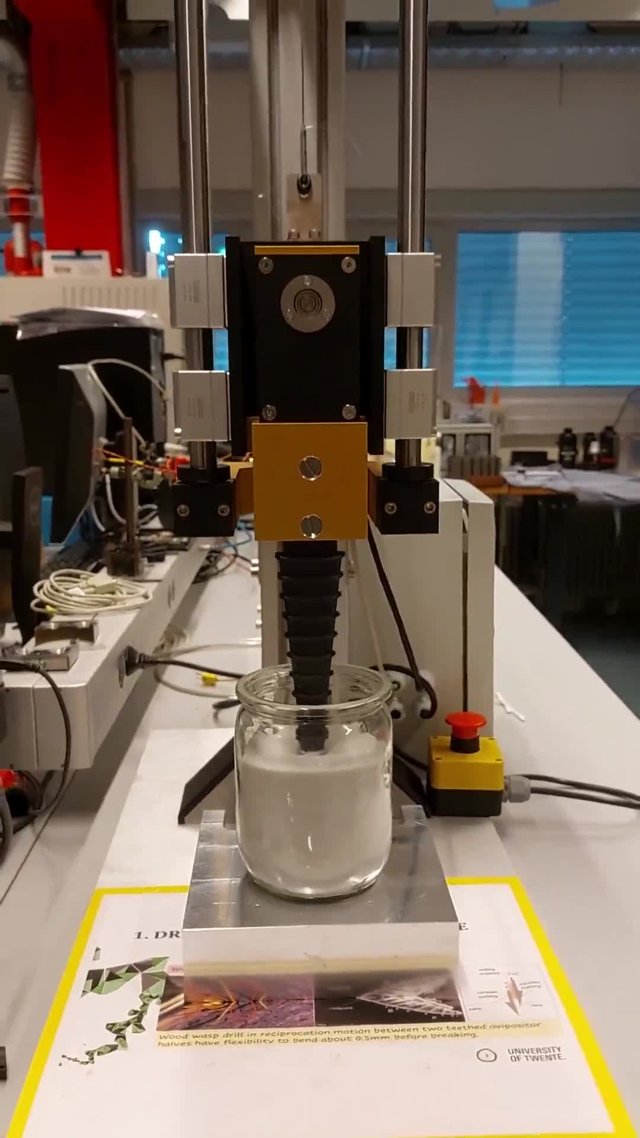Many researchers know the feeling: You have plenty of exciting research ideas, and some are even more wild than the other. And often, the wilder the idea the more difficult it is to find required funds to finance your ideas. It are these research ideas that can be the start of something new, something special, something big!
The Faculty ET offered seed money to stimulate the initiation of challenging research ideas. We have challenged you to submit these exciting research ideas to us. For the year 2023, the internal committee has granted on the following three proposals:
- Baran Ulak: SAFE-MIND - Reading the minds of cyclists by fNIRS to improve traffic safety
- Malte Asseln: Deployable implant spacer for minimal invasive joint replacement
- Fengxian Liu: Breaking Barriers: Introducing Dislocations into Ceramic Electrolytes to Empower Solid-State Batteries (BettEr)
1. SAFE-MIND - Reading the minds of cyclists by fNIRS to improve traffic safety
Baran Ulak: In 2022, EU witnessed 20,600 fatalities in traffic crashes and 737 of these victims died in crashes in the Netherlands, half of whom were cyclists. Traffic safety is a public health concern of major proportions already and providing safety becomes more challenging for ageing societies due to ageing-related decline in cognitive capabilities affecting cycling safety. This “crazy research” will address this challenge by investigating the potential of a sensor system involving functional near-infrared spectroscopy (fNIRS) to:
- Detect cognitive (over-)loading during cycling, and
- Intervene to improve the safety of cyclists.
To conduct experiments, we will design a cycling helmet with fNIRS sensors and haptic stimulants which will be the prototype for a potential future product. Moreover, we won’t be alone in this research journey, we will join forces with Dr. Funda Yildirim (CNVP lab of BMS) to harness their cognitive science expertise. With this project, we venture into a new and uncharted territory which can pave the way for a new research line integrating cognitive science and traffic safety engineering. We will produce a functioning prototype of a smart cycling helmet and results can be a stepping stone for developing personalized assistance systems for cyclist.
2. Deployable implant spacer for minimal invasive joint replacement
Malte Asseln: Minimally invasive joint replacement offers benefits like small incisions, little tissue damage, reduced pain, and fast recovery. Traditionally, the surgery has been adapted to the (size of the) implant limiting the true surgical potential. So there is a misconception for truly minimal invasive joint replacement as large implants are transferred through the skin, soft tissues and capsule. In this project, we will do the opposite and develop deployable implants to adapt the implant to the desired surgical and patient requirements. We aim to use adaptability as a new paradigm in implant design for joint replacement. Origami-inspired deployable mechanisms are an exciting development in medical devices, drawing inspiration from the Japanese art of paper folding to create adaptable structures.
There are many advantages to this concept. Origami techniques create intricate 3D structures tailored to fit specific surgical and anatomical needs. Deployable implants can expand and adapt inside the body for a better fit and improved function. While researchers have worked on deployable stents, heart valves, and neural implants, joint replacements remain unexplored in this context. This project will enable further research on adaptable implants within the research theme of personalized orthopedic devices.
3. Breaking Barriers: Introducing Dislocations into Ceramic Electrolytes to Empower Solid-State Batteries (BettEr)
Fengxian Liu: Solid-state lithium batteries (SSLBs) are emerging as undeniable game-changers in the future of energy storage! However, fully unleashing their high-power potential for widespread commercialization requires addressing persistent challenges associated with interface failures caused by Li (dendrites) penetration. This urgency intensifies in the case of ceramic solid electrolytes (SEs) due to their inherent brittleness, despite their position as some of the most promising SE variants owing to their high room-temperature ionic conductivity comparable to their liquid electrolyte(LE) counterparts.
While metals gain toughness from mobile dislocations, ceramics' strong bonding is typically believed to hinder dislocation-mediated toughness enhancement. Nevertheless, recent advancements in introducing dislocations into ceramics indisputably demonstrate remarkable toughness improvement. Inspired by this breakthrough, our crazy idea aims to explore the potential of precisely tailor the toughness and ionic conductivity of ceramic electrolytes through strategically introducing dislocations. This innovative approach holds great promise as it opens new avenues for improving the mechanical properties and the conductivity of SEs through defect engineering, enabling them to withstand the strains of Li penetration and effectively prevent battery short circuits, thus unlocking the full potential for efficient and eco-friendly energy storage solutions.
Results previous research calls (2021/2022)
Curious about the results of previous research calls. Check out some results below:






